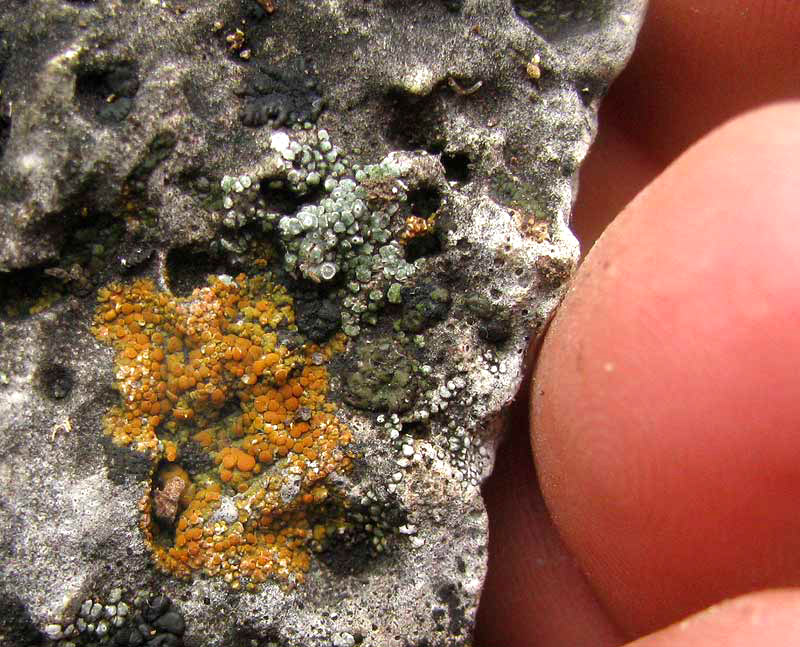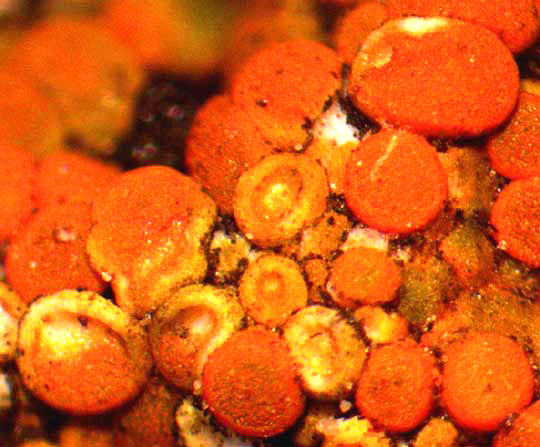Excerpts from Jim Conrad's
Naturalist Newsletter

from the February 16, 2014 Newsletter issued from the Frio Canyon Nature Education Center in the valley of the Dry Frio River in northern Uvalde County, southwestern Texas, on the southern border of the Edwards Plateau; elevation ~1750m (~5750 ft); N29.62°, W99.86°; USA
FIREDOT LICHEN
A jaggedly eroded, matchbox-size rock lying loose atop the Edwards Limestone capping our hill bore a tiny, yellow-orange smudge that needed looking at. Up close, the smudge turned out to be a very small lichen. You can see it above, just below a similarly miniscule grayish lichen, and with the tip of one of my fingers nudging in from the right to show how very small all this lichen is.
Carrying the rock home to look at it below the dissecting scope, the orangish lichen displayed cuplike, spore-producing apothecia like most lichens, but only about half a millimeter across (±1/30th inch). You can see some below:

We've encountered a similarly structured but larger lichen on limestone, one with bright, reddish-orange apothecia, not far from here, the "Firedot" shown at https://www.backyardnature.net/n/x/firedot.htm.
Our hilltop lichen also was a firedot, meaning that it was a member of the genus Caloplaca. Depending on your expert, about 88 Caloplaca species are listed for North America. There's even a Caloplaca obamae named for President Obama, discovered in 2007 in California. The best I can tell, this one is CALOPLACA SUBSOLUTA*, which occurs worldwide and is found only on rocks, both limestone and other kinds.
In Biology 100 we learn that lichens come in three types: crustose, foliose and fruticose. This Firedot doesn't fit neatly any of those categories. The LichenPortal.Org website describes it as "squamulose, areolate or subsquamulose." Squamulose refers to scales, and areolate means having its parts separated by small spaces -- a cracked appearance.